A meeting in Lahore between the Federal Law Minister Babar Awan and the former chief minister of Punjab and PMLQ leader, Chaudhry Pervez Elahi, has shaken up the political scene in Pakistan by opening up the possibility of new political alignments which had until now been dismissed as impossible. While a marriage, even if of convenience, between the beleaguered PPP and the fragmenting PMLQ, cannot be ruled out, tying the knot is easier said than done. After all, not only is there a lot of bad blood between the rank and file of the PPP and PMLQ that will have to be washed away – for instance, Asif Zardari had called the PMLQ ‘Qatil League’ while the Chaudhry Pervez Elahi has, more than once, held PPP responsible for the break-up of Pakistan – there is also a big ideological barrier that will have to be crossed before the two parties can jump into bed with each other.
If the leadership of the two parties can manage the glaring contradictions that militate against an alliance between them, it will lead to far-reaching changes in the political power structure inside the country, not just in the centre but also in Punjab and Sindh. In the National Assembly, the PPP with 126 MNAs depends on the support of the 25 MNAs of MQM for crossing the magic figure of 172. But if MQM is replaced by the 53 MNAs of PMLQ, then the PPP government will more than make up for the loss of MQMs support. In Punjab, the ruling PMLN with 170 MPAs is 16 short of a majority. If the PPP with 107 MPAs and PMLQ with 83 MPAs join hands, they cross the half-way mark and can form the government. In Sindh, the exit of the MQM from the coalition will make no difference to the PPP since it enjoys a comfortable simple majority in the provincial assembly. But a divorce between the PPP and MQM will have severe consequences on not just the ethnic relations in Sindh but, more importantly, on the law and order situation in places like Karachi and Hyderabad.
It is of course another matter altogether whether these changes will lead to greater political stability or if they will become the precursor to greater instability. But even if the meeting between Awan (clearly acting on behalf of Asif Zardari) and Elahi doesn’t lead to anything more than an exchange of views over a cup of tea, it will have achieved a major political objective: signalling that the PPP has a range of options which it can exercise if it is pushed against the wall, either by its allies like MQM or by its opponents like PMLN.
The immediate provocation for the PPP to open channels of communication with the PMLQ was the steady hardening of opposition by the PMLN and the restiveness of the MQM which had almost quit the coalition before Asif Zardari managed to pull them back. There was a growing sense within the PPP that the MQM was no longer a reliable ally and that alternatives to the MQM had to be worked out so that in the event of a pullout by the MQM, the coalition at the centre would have the numbers to retain its majority in the National Assembly. The move, spearheaded by the chief of the PMLF, Pir Pagara, to reunite the various Muslim Leagues had also spooked the PPP because it depends on a split Muslim League to win its seats in the Punjab. A unified conservative vote would effectively reduce PPP into a marginal player in Punjab where nearly 70-75% of the vote is cast in favour of right wing conservative parties.
After winning the approval of PMLQ President Shujaat Hussein for this reunification move, Pagara was in the process of approaching Nawaz Sharif to play his role in unifying the Muslim Leagues. The meeting between some PMLQ leaders with Shahbaz Sharif had further added to the discomfiture of the PPP which was receiving reports that Nawaz Sharif had given the go ahead for building up support to move a motion of no-confidence against the PPP government in order to effect an in-house change in government. The fact that PMLN had also started building bridges with the MQM only further convinced the PPP that the opposition was coalescing to bring down the government.
Amidst all this manoeuvring, Nawaz Sharif made the mistake of declaring that while he was in favour of reuniting the Muslim Leagues, he could not countenance the inclusion of people like the Chaudhry cousins, Sheikh Rashid, and some others, as becoming part of the unified Muslim League. On their part, the Chaudhries too were averse to a unified Muslim League in which they would have to play second fiddle to the Sharifs’. The PPP took advantage of this opening created by Nawaz Sharif’s inflexibility to kiss and make up with people who, according to him, had deserted him and joined hands with Gen. Pervez Musharraf to form the PMLQ which ruled the roost as the King’s party during the Musharraf regime.
By reaching out to the PMLQ, the PPP may have scuttled the moves to reunify the Muslim League. But there are other advantages that will accrue to both PPP and PMLQ if they actually are able to strike an alliance, provided of course in the process of joining hands the two parties are able to keep their flock together. The PPP will be able to get rid of the MQM’s constant arm-twisting and will get a free hand to launch a clean-up operation in Karachi to end the wave of target killings in that city. At the centre, the PMLQ will replace the MQM and lend a more solid majority to the ruling coalition. The two parties will also be able to form their own government in Punjab, where although the PPP is part of the PMLN-led coalition, it is feeling sidelined in the decision making in the province which is considered Pakistan's ‘controlling authority’. The PMLQ which has been fragmenting – there are currently four distinct factions in the Q League, all of which are pulling the party in separate directions – might be able to unify the party with the glue of power in both Islamabad and Lahore.
While the advantages of a tie-up between the PPP and PMLQ are clear, what is not so clear is whether the leadership of the two parties will be able to take their party folk along in the new political arrangement. The task of tying up with PPP is somewhat more difficult for the PMLQ than the other way round. For one, there are differences between Shujaat and Pervez Elahi on an alliance with PPP, with the latter keen on getting back in the driver’s seat while the former is more circumspect about embracing the PPP. Even if the cousins forge common ground, how many of the party men will they be able to take along with them? Unlike the PMLN in which the party revolves around the Sharifs’, and the PPP where Asif Zardari is the undisputed boss, the Chaudhries are only first among equals in the PMLQ. If anything, PMLQ is an agglomeration of politicians who are individually influential in their pocket boroughs and do not depend on the Chaudhries to win their elections. Given that many of the top PMLQ leaders are viscerally opposed to the PPP, coupled with the fact that joining hands with the PPP won’t earn them any favours with the ‘establishment’, there is little incentive for many Q leaguers to follow the lead of the Chaudhries on the issue of an alliance with the PPP.
Then there is the issue of the existing divisions within the Q. There is one faction of the Q – Likeminded – which is keen on forging its own path and cultivating its own identity and which refuses to accept the leadership of the Chaudhries. The likeminded group, which includes big names like former foreign minister Khurshid Kasuri, former commerce minister Humayun Akhtar and Saleem Saifullah, is somewhat irrelevant as far as the current power politics is concerned because of most of the top figures in this faction are not members of any legislature at this point in time. A second faction is what is known as the ‘forward bloc’ is led by Atta Mohammed Maneka and comprises mostly of those lawmakers in the Punjab assembly who want to rejoin the PMLN. A third faction comprises of those who are leaning towards the PPP and includes people like Riaz Pirzada. And finally, there is the faction which remains loyal to the Chaudhries and has heavy weights like Faisal Saleh Hayat and Amir Muqam. Perhaps the only reason why the PMLQ has not split formally until now is the anti-defection law, which has been further strengthened after the passage of the 18th Amendment under which the party president enjoys unbridled powers over his party legislators and can have them disqualified for the slightest infraction. Another reason why the ‘forward bloc’ has not switched sides is because it has felt let down by Nawaz Sharif who, after initially leading them on, has left them out in the cold.
While the fear of losing their seats could play a big factor in keeping the Q League together, a lot will depend on the political calculations of the legislators. If the lawmakers think long-term and come to the conclusion that they will be signing their political obituaries by joining a PPP-led coalition, they might well decide to cast their lot with the Sharifs’ and try and get re-elected on a PMLN ticket from their constituencies in the by-elections. This gambit will of course entail the risk of fighting another election – hardly a palatable prospect for any politician if he can avoid it. There is also the risk that if they resign en masse (thereby tilting the number game in punjab assembly in favour of the PMLN), Nawaz Sharif might not give them the party ticket to win back the seats they sacrificed. The cold shoulder that the PMLN leadership gave to many of the erstwhile PMLQ members as well as the neglect of the forward bloc after the revocation of the governor’s rule in Punjab and rapprochement between the PMLN and PPP (with PPP once again included in the Punjab cabinet) would have only strengthened the doubts in the minds of the ‘forward bloc’ members. For now, however, the leader of the ‘forward bloc’, Atta Mohammed Maneka, has declared that the 48 member strong faction will not let Shahbaz Sharif’s government fall and will support him in the event of a floor test. Regardless of whether the forward bloc resigns or is disqualified, in either case a mini general election that will result because of their support to the PMLN could throw up some rather unpleasant political configurations in the legislative assemblies from the point of view of the ruling coalition. In other words, the entire political calculus driving the realignment could end up in a disaster.
Conversely, if the PMLQ lawmakers give priority to the present over the future, and go with the bird in the hand, there will still be problems as far as providing good and efficient governance is concerned. In a political system that runs on dispensing patronage, there will probably very little latitude available to spread the political goodies among supporters, what with bankruptcy staring Pakistani state in the face. If, however, political expediency rules over the imperatives of sensible economics, as is likely to happen, then it will only worsen the state of affairs in Pakistan and push the state further towards failure.
There will also be the attendant issues of competition for the same political space. In a sense, the political space occupied by the PPP and PMLN did not clash as much as it will in the case of the PPP and its ally ANP on the one hand and the PMLQ on the other hand. The PMLN is primarily a GT road party and dominates in the Raiwind (Lahore) – Rawalpindi belt which extends a little into Khyber-Pakhtunkhwa along the GT road (Hazara division). The PPP and PMLQ however have a pan-Pakistan footprint and therefore more clash of interest. There are serious local rivalries between top leaders of the two parties all over Punjab. The situation is even worse in Sindh. Papering over these rivalries is going to take some doing and on current record appears to be a mission impossible.
All things taken into account, while the prospect of a political deal between the PPP and PMLQ appears to be very clever, almost Machiavellian in scope, it’s hardly the sort of political arrangement that has a long shelf life. But then in a country obsessed with a mythical past and which puts a huge premium on the present, power politics by definition has a short shelf life, more so when the only agenda before an incumbent is to ensure the completion of his term in office. Therefore, if a PMLQ-PPP alliance is able to ensure the survival of the PPP-led coalition for the next two years, it will have served its purpose.
-----------------------------------------
Published Date : October 31, 2010

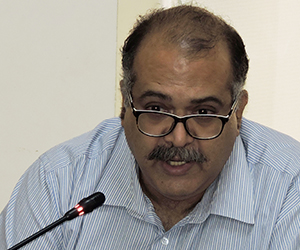
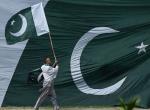


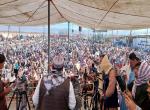
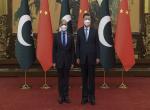
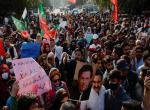
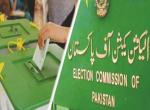
Post new comment